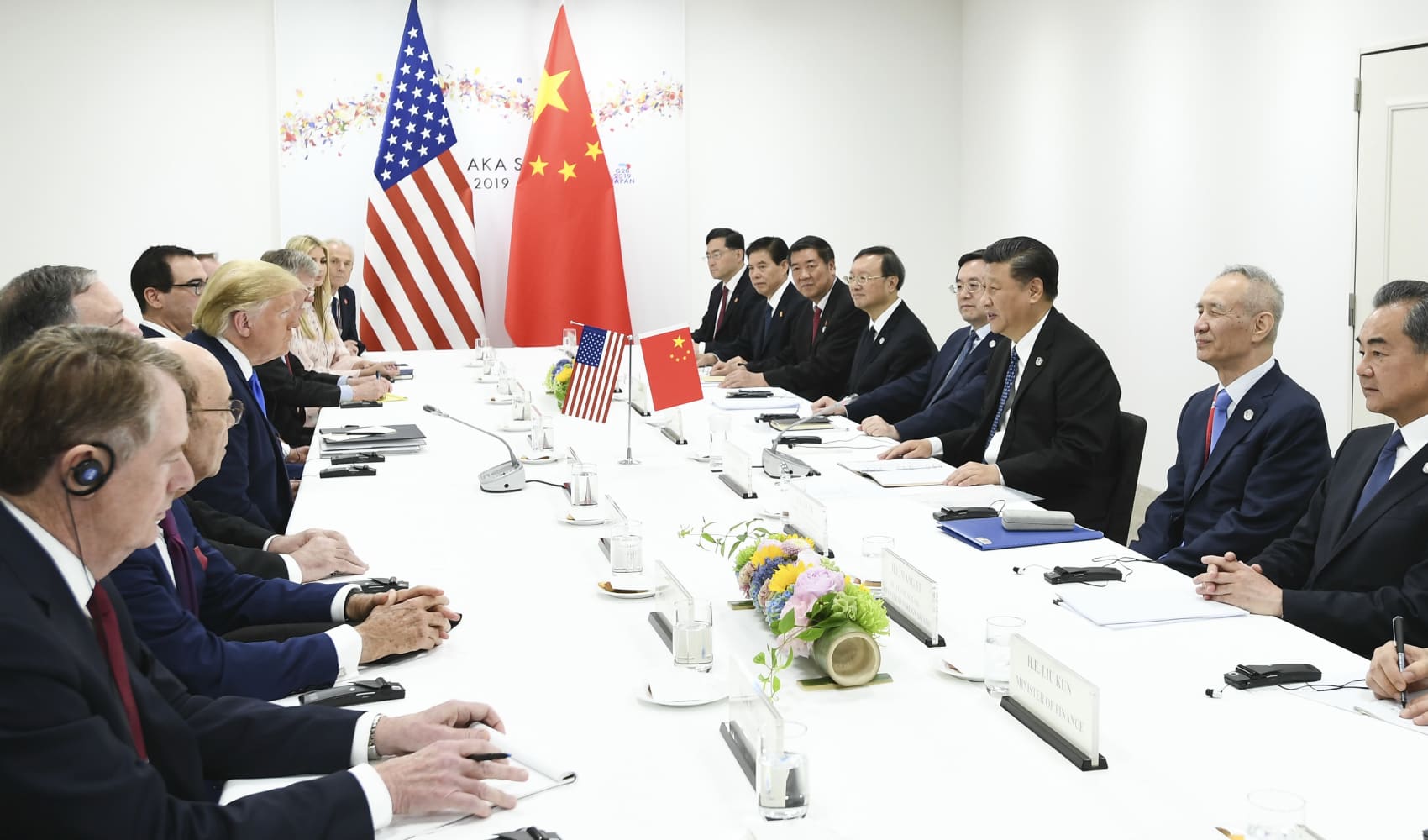AMD CEO on China: Opportunity or Export Control Trap?
AMD's Lisa Su: China's Chip Market – Opportunity or Risk?
Introduction: Navigating the Semiconductor Seas
The semiconductor industry is a turbulent sea right now, isn't it? Trade winds are shifting, tariffs are looming, and export controls are tightening. Amidst this uncertainty, Advanced Micro Devices (AMD) CEO Lisa Su has stepped forward with a clear message: China remains a "large opportunity" for the semiconductor and AI industries. But, like navigating a complex shipping route, this opportunity comes with its own set of challenges and risks. Let's dive into the details of her remarks and explore the implications for AMD and the wider tech world.
China: A Semiconductor Powerhouse
The Sheer Size of the Market
Why all the fuss about China? Well, simply put, it's enormous. China is the world's second-largest economy and a massive consumer of semiconductors. From smartphones and laptops to electric vehicles and data centers, Chinese demand for chips fuels much of the global industry. Ignoring this market would be like a restaurant ignoring a whole city full of hungry customers.
China's Growing AI Ambitions
Beyond just consumer electronics, China is investing heavily in artificial intelligence. This translates into a massive need for advanced GPUs and other AI-specific chips, the kind AMD specializes in. This presents a significant growth area for the company, but it also raises some tricky questions about where that technology ultimately ends up.
Balancing Act: Export Controls vs. Market Access
The Tightrope Walk of National Security
This is where things get complicated. The US government has been tightening export controls on advanced chips to China, citing national security concerns. The worry is that these technologies could be used for military applications or to bolster China's surveillance capabilities. It's a delicate balancing act between protecting national interests and allowing US companies to compete in a vital market.
Su's Call for Balance
Lisa Su argues that there needs to be a "balance between export controls for national security as well as ensuring that we get the widest possible adoption of our technology." In other words, she's not advocating for a complete free-for-all. She recognizes the need for safeguards, but she also believes that overly strict controls could stifle innovation and hurt US competitiveness. Think of it like this: putting up a high fence might keep unwanted visitors out, but it also prevents you from interacting with friendly neighbors.
AMD's Fiscal First-Quarter Results and Tariff Headwinds
Navigating the Financial Currents
Su's comments come at a time when AMD is grappling with its fiscal first-quarter results and the broader economic headwinds affecting the tech industry. Evolving tariff policies and chip export controls are adding uncertainty to the mix. It's like trying to navigate a ship through a storm while also dealing with rising fuel costs and unexpected cargo fees. Not easy!
The Impact of Tariff Plans
Tariffs can significantly impact AMD's bottom line by increasing the cost of manufacturing and shipping its products. This can make it harder for the company to compete with rivals and can ultimately lead to higher prices for consumers. It's a ripple effect that can have far-reaching consequences.
US-China Tech Relations: A Shifting Landscape
The Semiconductor Cold War?
Some analysts are warning of a potential "semiconductor cold war" between the US and China. This scenario would involve escalating trade restrictions, technological decoupling, and increased geopolitical tensions. If this happens, AMD and other US chipmakers could find themselves caught in the crossfire.
De-risking, Not Decoupling
Many companies are focusing on "de-risking" rather than "decoupling" from China. This involves diversifying supply chains, reducing reliance on Chinese manufacturing, and finding alternative markets. It's like having multiple anchors on a ship to prevent it from drifting too far in one direction.
The Future of AI and Semiconductors in China
A Booming AI Market
Despite the challenges, the Chinese AI market is expected to continue to grow rapidly. This growth will be driven by government investment, increasing demand for AI-powered applications, and the availability of vast amounts of data. AMD is well-positioned to capitalize on this trend, provided it can navigate the regulatory landscape effectively.
Opportunities Beyond Traditional Markets
Beyond AI, China's rapidly growing electric vehicle (EV) market and its expanding cloud infrastructure also present significant opportunities for AMD. These sectors require high-performance computing power, which AMD's CPUs and GPUs can provide.
AMD's Competitive Advantage: Innovation and Technology
Staying Ahead of the Curve
To succeed in the Chinese market, AMD needs to continue to innovate and develop cutting-edge technologies. This will allow it to differentiate itself from competitors and maintain a strong market position. Think of it as constantly upgrading your ship with the latest navigation equipment and engines to stay ahead of the pack.
The Power of Collaboration
Building strong relationships with Chinese partners is also crucial. This can involve joint ventures, technology licensing agreements, and strategic alliances. Collaboration can help AMD navigate the complexities of the Chinese market and gain access to local expertise and resources.
Ethical Considerations: Navigating Murky Waters
The Responsibility of Tech Companies
As technology becomes more powerful, companies like AMD face increasing ethical considerations. It's important to ensure that their technologies are used responsibly and do not contribute to human rights abuses or other harmful activities. This is like making sure that the cargo on your ship is being used for good purposes.
Transparency and Accountability
Transparency and accountability are essential for building trust with stakeholders. AMD needs to be open about its business practices in China and demonstrate its commitment to ethical conduct. This can involve regular reporting on its activities and independent audits of its supply chain.
Conclusion: Charting a Course for Success
Charting a Course for Success
Lisa Su's perspective on China highlights the complex and dynamic nature of the semiconductor industry. While challenges certainly exist, the potential rewards of the Chinese market are too significant to ignore. By striking a balance between export controls and market access, fostering innovation, and prioritizing ethical considerations, AMD can chart a course for long-term success in China. The key takeaway is that success hinges on skillful navigation of a constantly evolving landscape. Will AMD be able to steer the ship effectively? Only time will tell.
Frequently Asked Questions (FAQs)
Q1: Why is China such an important market for AMD and other semiconductor companies?
China is a huge market with massive demand for electronics, AI, EVs and cloud infrastructure, making it a vital source of revenue and growth for semiconductor companies like AMD.
Q2: What are the potential risks of doing business in China for a US company like AMD?
The risks include evolving US export controls, potential trade tensions between the US and China, intellectual property theft, and the potential for increased competition from Chinese companies.
Q3: How can AMD navigate the challenges of doing business in China while adhering to US regulations?
AMD can navigate these challenges by carefully monitoring export control regulations, diversifying its supply chains, and building strong relationships with trusted Chinese partners.
Q4: What is the potential impact of strict US chip controls on AMD's business?
Strict controls could limit AMD's ability to sell its most advanced chips in China, potentially impacting its revenue and market share in this crucial region.
Q5: What strategies can AMD employ to mitigate the risks associated with doing business in China?
Strategies include diversifying its customer base, focusing on less sensitive products, investing in research and development to maintain a competitive edge, and collaborating with industry peers to address common challenges.


